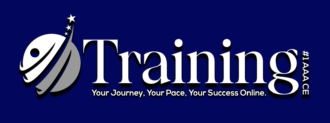Figure 1-1: Hiring and Retention Challenges
Hiring and retaining top talent is essential for organizations seeking sustainable growth and success. In today’s cutthroat job market, organizations help find and keep top talent. These problems can significantly affect a company’s growth and success, from finding qualified employees to staying engaged and loyal.
In the highly competitive business world of today, it’s hard for companies to find and keep top talent. Finding the appropriate people to add to the workforce and ensuring their long-term commitment to the organization has become a process that is more difficult than it has ever been before.
Organizations must navigate various hurdles to build a strong and effective workforce, from attracting qualified candidates in a crowded job market to fostering employee engagement and loyalty. Any organization’s success depends on how well it can find and keep talented people who can use their skills, knowledge, and experience to drive growth and innovation.
Organizations can position themselves to attract and keep top talent if they understand the dynamics of the modern job market and the evolving expectations of employees. Because of this, they can gain a competitive advantage, push the boundaries of innovation, and achieve success over the long term.
The article will explore some of the most common challenges businesses face in hiring new employees and retaining existing ones and provide strategies and examples of best practices for overcoming those challenges. By implementing efficient recruitment and retention strategies, companies can create a solid, motivated workforce that drives long-term success.
1: Attracting Qualified Candidates:
Figure 1-2: Attracting Qualified Candidates
One of the primary challenges in hiring is attracting qualified candidates. With more jobs opening up and the talent market getting more competitive, it can be challenging for organizations to stand out and attract the best people. To address this challenge, companies should focus on the following:
- Building a strong employer brand: Candidates should know the company’s mission, values, and unique selling propositions. To attract top talent, emphasize a positive work environment, growth opportunities, and employee benefits.
- Using effective recruitment channels: To reach a larger pool of candidates, diversify recruitment channels such as job boards, social media platforms, professional networks, and employee referrals.
- Writing interesting job descriptions: Define job requirements, responsibilities, and expectations with precision. Highlight the company’s culture and opportunities for growth to get potential candidates interested.
2: Streamlining the Hiring Process:
Figure 2-1: Streamlining the Hiring Process
A long and complicated hiring process can turn away good candidates and make it harder to find new talent. To deal with this problem, organizations should pay attention to the following:
- Simplify the application process: The application process should have as few steps and requirements as possible. Use application platforms that are easy for candidates to use and ensure their experience goes smoothly.
- Streamlining the interview process: Conduct structured interviews, include relevant stakeholders, and establish clear evaluation criteria to ensure an effective interview process.
- Communicating quickly: Provide candidates with timely updates and feedback throughout the hiring process. Effective communication helps candidates maintain their interest and engagement.
3: Employee Engagement and Retention:
Figure 2-2: Employee Engagement and Retention
Once top talent is hired, organizations must focus on employee engagement and retention to ensure long-term success
- Employee engagement and retention: For long-term success, companies need to pay attention to employee engagement and retention after they have hired top talent. Common challenges in this area include:
- Create a positive work culture: Create a positive, supportive, and all-inclusive workplace where people feel valued, respected, and motivated. Encourage open communication, give credit for accomplishments, and give people chances to grow and develop.
- Providing competitive pay and benefits: Do market research on a regular basis to make sure that the organization’s pay and benefits remain competitive. Offer salary reviews, bonuses based on performance, and a wide range of employee benefits.
4: Competitive Compensation and Benefits:
Figure 3-1: Competitive Compensation and Benefits
Offering competitive compensation and benefits is important for attracting and retaining top talent. Regular market research helps organizations ensure that their salary packages align with industry standards.
In addition to financial rewards, organizations should also consider giving non-monetary benefits like flexible work schedules, opportunities for professional growth, and a supportive balance between work and life. Employee recognition programs can further enhance job satisfaction and loyalty.
5: Enhancing Diversity and Inclusion:
Figure 3-2: Enhancing Diversity and Inclusion
Diversity and inclusion are essential for creating a workforce that is both innovative and dynamic. But organizations often have trouble promoting diversity and including everyone. To address this, companies should:
- Create inclusive culture: Encourage all employees to participate and contribute in a welcoming environment that values diversity. Develop diversity and inclusion training programs to address unconscious biases and raise awareness.
- Ensure diverse hiring practices: Develop diverse candidate pipelines by actively seeking candidates from underrepresented groups. Implement blind hiring techniques to reduce biases during the selection process.
On a final note:
In conclusion, it takes a strategic and proactive approach to deal with the challenges of hiring and keeping employees. Organizations can improve their ability to attract, hire, and retain top talent by implementing the strategies discussed in this article.
Building a stable and motivated workforce benefits the organization’s bottom line while encouraging a positive work environment, innovation, and long-term success. Ultimately, how you treat your best employees will affect whether they remain with you long-term. If you have an awareness of the significance of retaining employees and a desire to do so,
In the end, hiring and keeping top talent is a continuous process that requires constant effort and changes. By staying attuned to employees’ evolving needs and expectations, organizations can create an environment that attracts and retains exceptional talent, fuels growth and positions them for a prosperous future. Stay safe and learn more about health-related continuing education, eetsonline.com.
